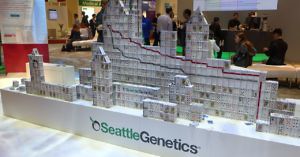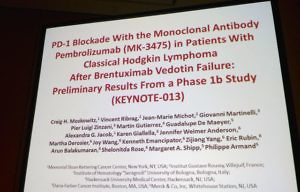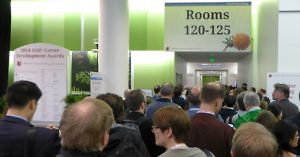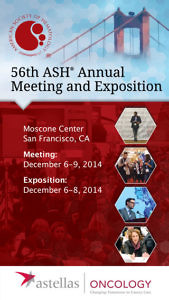LeonardList showcases 10 Lymphoma Abstracts at ASH16
John P. Leonard, MD is the Richard T. Silver Distinguished Professor of Hematology and Medical Oncology at Weill Cornell in New York. He’s a Lymphoma specialist.

Dr John Leonard at ASH16
Like many hematologists, he’s embraced Twitter as way to share his expertise with others in the hematology community. You can follow him at @JohnPLeonardMD.
Over the last couple of years prior to the ASH annual meeting, Dr Leonard has highlighted 10 lymphoma abstracts that caught his attention. You can tell he gets excellent social media pickup by the fact he’s even generated a hashtag to make them easy to find: #Leonardlist and other hematologists generate conversations around his eagerly awaited picks:
Excited to see our abstract made the #leonardlist of #ASH16 #lymphoma abstracts. #lymsm https://t.co/7U5z5rN9Ux
— Matthew J. Maurer (@MaurerStats) December 1, 2016
In case you missed them on Twitter, and in the spirit of David Letterman, Dr Leonard took me through this year’s #LeonardList and thoughtfully explained in detail why each selection made the cut… for oncology watchers, the why is often more important than the what.
Subscribers can login to read more
This content is restricted to subscribers


 In the past, much of the focus at previous American Society of Hematology (ASH) meetings in this area has focused on the myriad of chemotherapy regimens and dose/schedule optimisations that followed in trying to boost patient outcomes.
In the past, much of the focus at previous American Society of Hematology (ASH) meetings in this area has focused on the myriad of chemotherapy regimens and dose/schedule optimisations that followed in trying to boost patient outcomes. One of the hotly debated topics at the 2014 American Society of Hematology (ASH) annual meeting was the arrival of checkpoint data in classical Hodgkin’s lymphoma (cHL), with initial data presented on 20-30 patients with relapsed or refractory cHL who received either nivolumab (BMS) or pembrolizumab (Merck) in open label, single agent trials.
One of the hotly debated topics at the 2014 American Society of Hematology (ASH) annual meeting was the arrival of checkpoint data in classical Hodgkin’s lymphoma (cHL), with initial data presented on 20-30 patients with relapsed or refractory cHL who received either nivolumab (BMS) or pembrolizumab (Merck) in open label, single agent trials.
 Overall, I agreed with Ron Levy (Stanford) when he noted in the packed Special Session on Checkpoint inhibitors in Hematology that there were only 4 or 5 abstracts to actually discuss (he didn’t spend much time on the preliminary data) and that the results are still very early without seeing how good the durability will be.
Overall, I agreed with Ron Levy (Stanford) when he noted in the packed Special Session on Checkpoint inhibitors in Hematology that there were only 4 or 5 abstracts to actually discuss (he didn’t spend much time on the preliminary data) and that the results are still very early without seeing how good the durability will be.